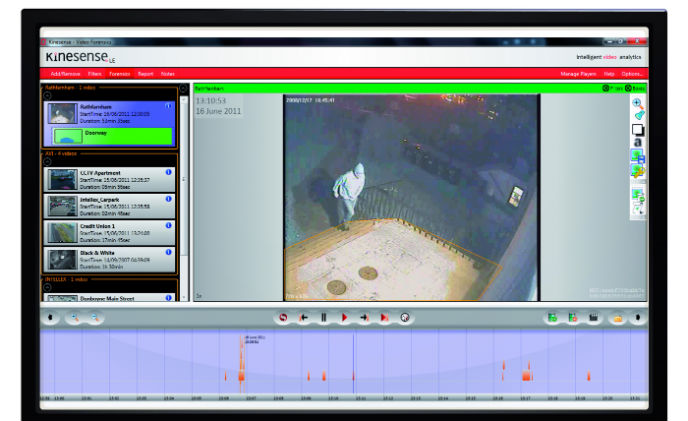“Our algorithms work even on video that has a low frame rate or low resolution, which is the type of surveillance video most commonly used in criminal investigations.”
Although there are several technological developments that allow real-time detection or early detection of threats, for the most part, the real use of video surveillance footage is post an incident. This is where video analytics, especially those that detect certain events within a video, has an advantage.
There are several companies that are currently offering analytic solutions for surveillance footage. And even though the technology is useful for different kinds of customers, law enforcement agencies need them the most for criminal convictions and prevention.
But the problem with video surveillance solutions in many public infrastructures is that they are not updated as quickly as their private counterparts. A private company, for instance, will be able to upgrade its security solutions at short notice, but a public enterprise would need governmental approval, funding and a whole lot of complex processes.
This is why in several countries, police video-surveillance solutions use low-resolution cameras that result in poor-quality footage. Now, experts and industry professionals can whine about how the governments should keep up with the technological advancements, but the reality is that this is not going to happen easily.
So what is the solution? How can security industry aid law enforcement agencies in their investigation processes without making major changes to the hardware in place? Sarah Doyle, MD at the Dublin, Ireland-based
Kinesense, seems to have an answer.
Analytics that work on low-quality video
Kinesense claims to develop time-saving video investigation management solutions for law enforcement and security market. Their software-based products include video retrieval, search and reporting solutions.
“We are specializing in cutting edge visual technology which enables the automatic detection of events in the video,” Doyle said.“This means that our solution eliminates time watching and sifting through hours of video for key events. The result is actionable intelligence faster and enormous savings in time and money during video investigations.”
 Kinesense's solution includes video retrieval, search and reporting. Image Source: Kinesense
Kinesense's solution includes video retrieval, search and reporting. Image Source: Kinesense
What makes Kinesense special is that the solution provides a one-stop package of functionality to deal with video from capture to the court. It can import video from thousands of different formats, analyze them automatically indexing key events and enable investigators to search for what they want. Most importantly, Kinesense’s algorithm works even with some of the worst cameras out there.
“Our algorithms work even on video that has a low frame rate or low resolution, which is the type of surveillance video most commonly used in criminal investigations,” Doyle said. “We provide complete video reporting package including annotation, redaction, clarification and storyboarding. Multiple users can log on to the platform and everything is logged to provide a full audit trail for disclosure purposes. It really is a one stop shop for video investigations.”
Market demand for a one-stop analytics solution
Kinesense’s solution is completely software-based and runs as an on-premise system for the clients. The company does consider cloud-based deployment as video volumes continue to increase and cloud storage makes sense. The company developed its solution based on the needs of law enforcement and are now a major provider to the U.K. law enforcement agency, besides sales in other international markets.
But looking ahead, what could drive demand for their solution in an increasingly crowded market?
According to Doyle, the amount of video that has to be analyzed not only from surveillance cameras but also from mobile phones, body-worn cameras etc., is on the rise. For these to be used in law enforcement, the adoption of a video analytic solution is essential. There aren’t enough people or time to manually watch them.
“This is the key demand factor but it’s facilitated by advancements in technology, both on the analytic side and the computer processing side,” Doyle said. “It’s faster and cheaper to process video now. Automatic video investigation is affordable now.”
The future of law enforcement surveillance
As a technology, video analytics is at an exciting stage. The market is already aware of its benefits, but developments in artificial intelligence (AI) and deep learning mean that the technology can extend its usage to new applications and
behavioral analysis.
“We see suspect-search using video analytic fusion as a key growth area for our platform,” Doyle said. “So, say you want to find a suspect wearing red but there are 4000 people wearing red in the 24 hours of video you want to review, using face recognition combined with color-video analytics you can prioritize your results to show those with matches wearing red first.”